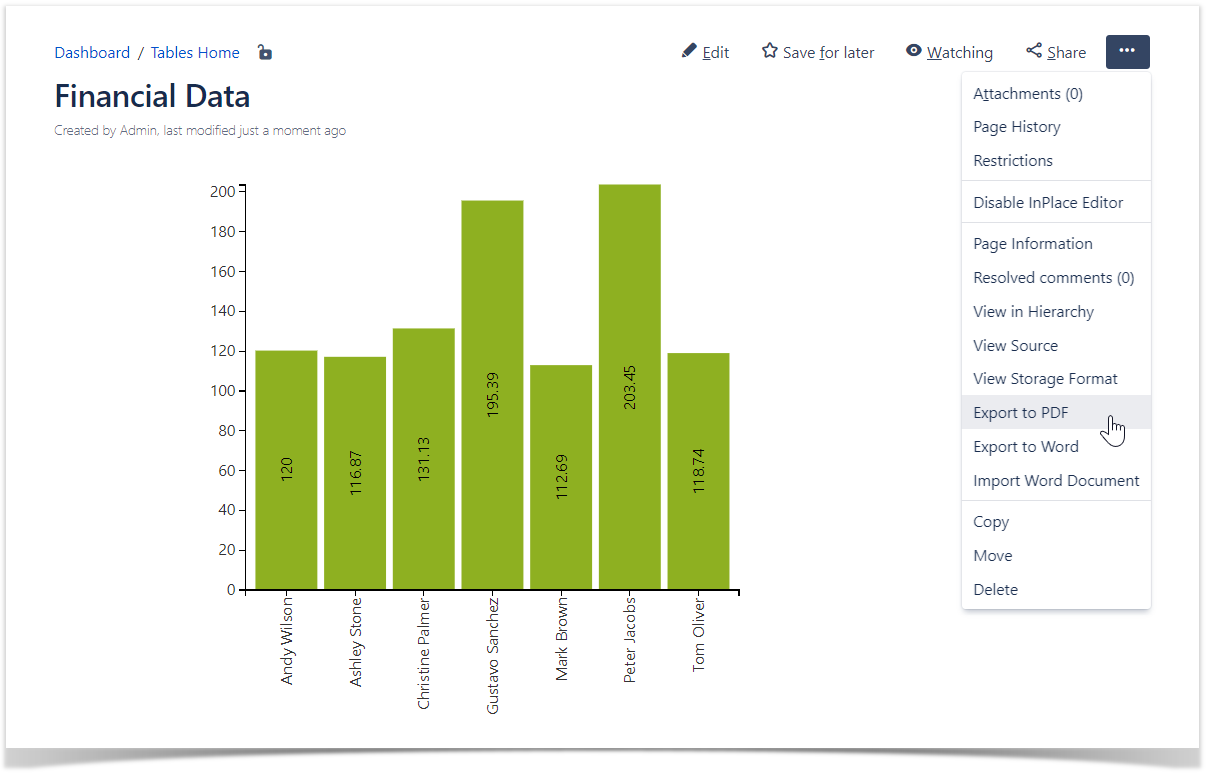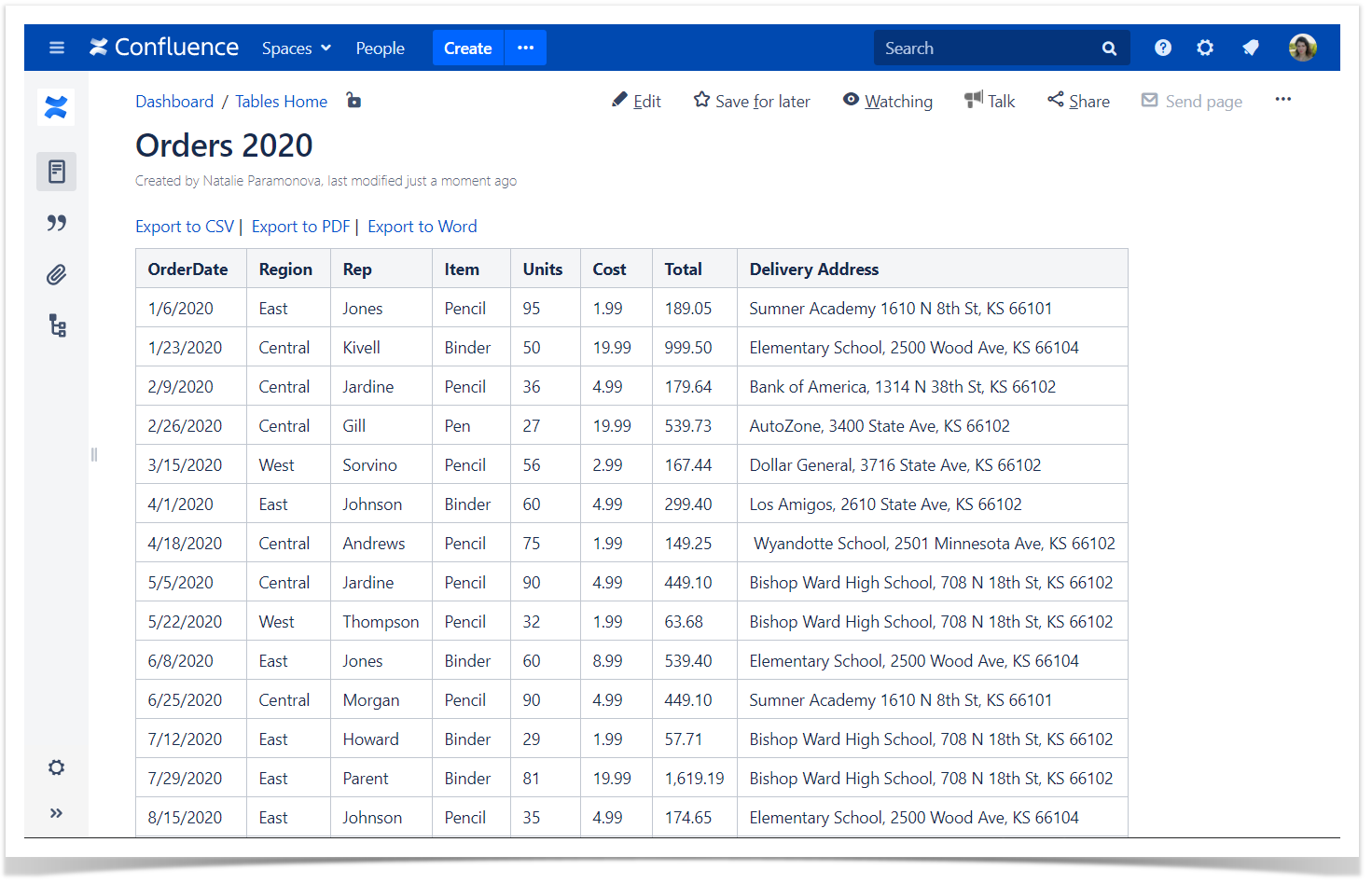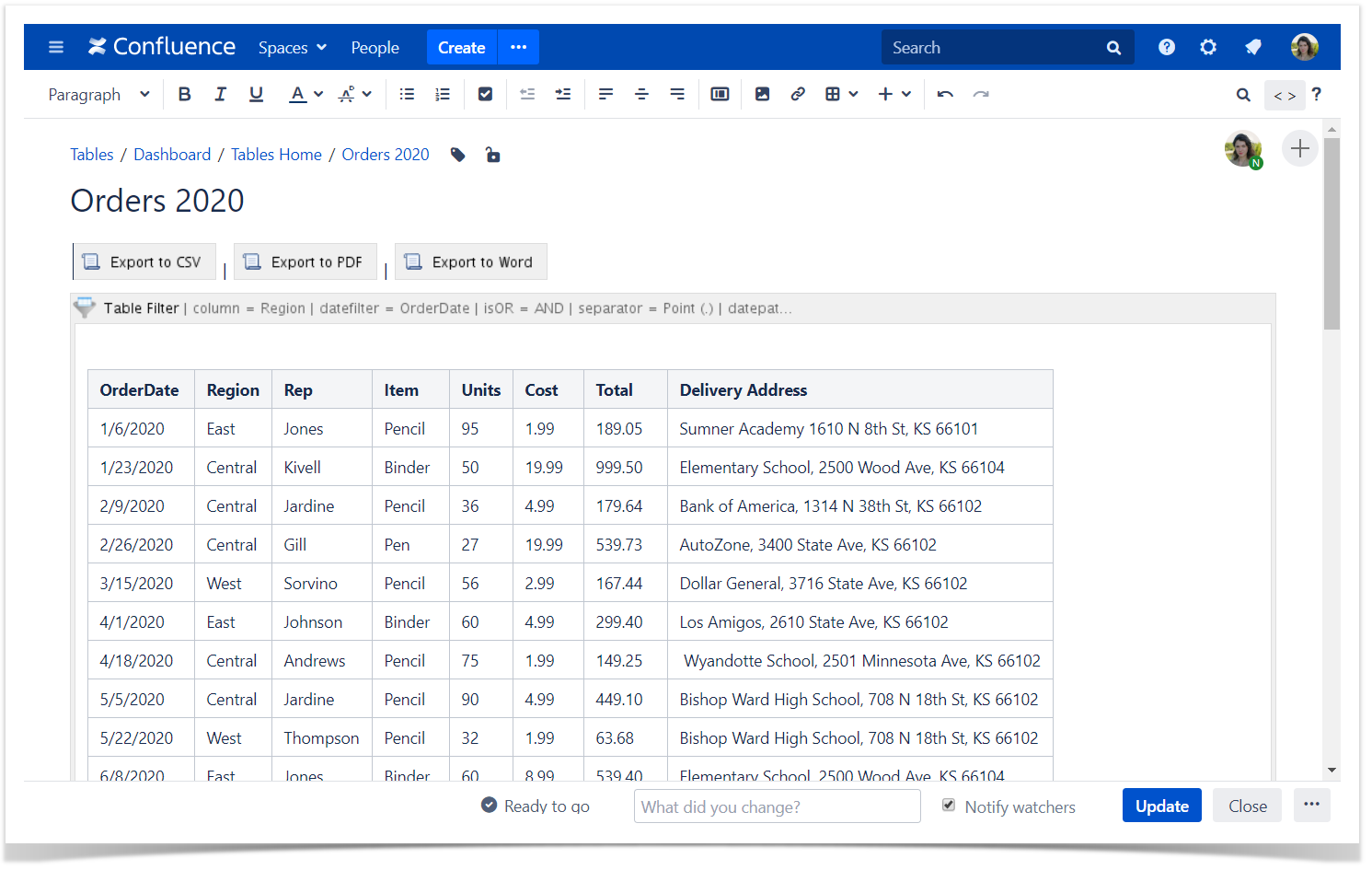|
Macros export options
Export to PDF
Available in the following macros:
Table Filter
Pivot Table
Chart from Table
Table Transformer
Steps to export:
On the filtration or control pane, locate the cogwheel icon and click it.
Click Export to PDF.
Save the file to your local computer for opening.
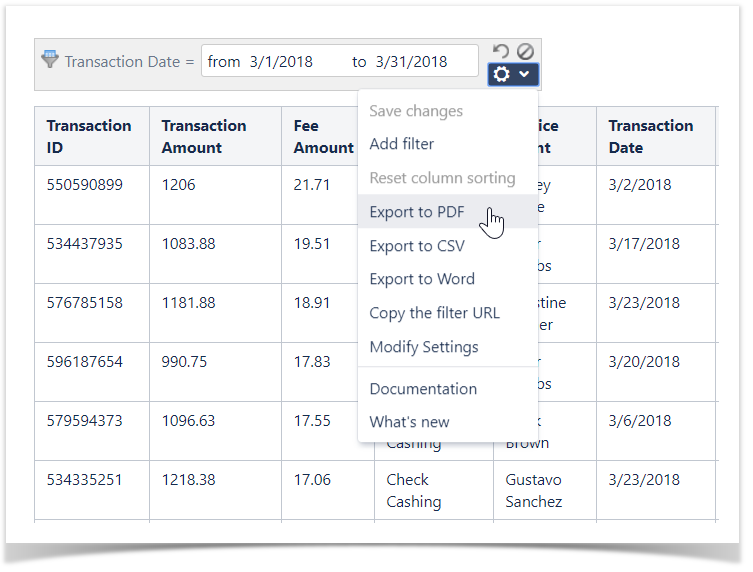
Export to Word
Available in the following macros:
Table Filter
Pivot Table
Chart from Table
Table Transformer
Steps to export:
- On the filtration or control pane, locate the cogwheel icon and click it.
- Click Export to Word .
- Save the file to your local computer for opening.
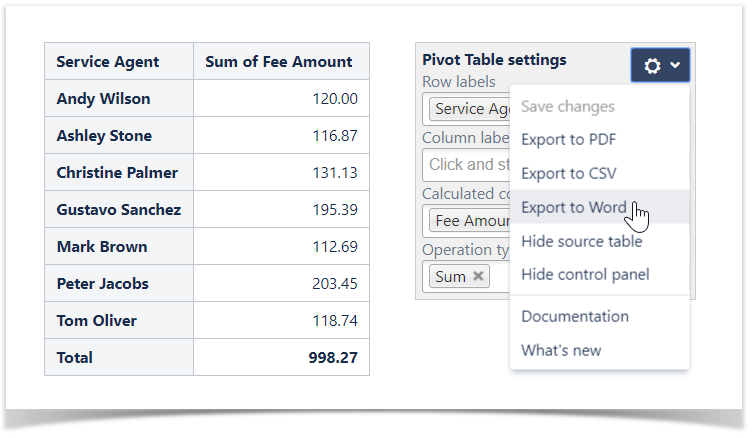
Export to CSV
Available in the folloving macros:
Table Filter
Pivot Table
Table Transformer
The add-on allows you to export data to CSV, as follows:
- default settings
- custom settings
The default CSV format uses the following parameters:
- Encoding: UTF-16LE.
- Unicode BOM: BOM \uFFFE
- Separator: Tab.
- Quote Character: Double Quotes.
The сustom CSV format uses the following parameters:
- Encoding: UTF-8.
- Unicode BOM: -
- Separator: Manually
- Quote Character: Manually
To export filtered data or pivot table to CSV (with default settings):
- Open the page with the table.
- Apply the necessary filters.
- On the filtration pane, click the cogwheel icon.
- Select Export to CSV.
- In the Export Options form, select Default settings.
- Click Export.
- Save the file to your local computer for opening.
To export hyperlinks as clickable links to CSV:
|
To export filtered data or pivot table to CSV (with custom settings):
- Open the page with the table.
- Apply the necessary filters.
- On the filtration pane, click the cogwheel icon.
- Select Export to CSV.
- In the Export Options form, select Custom settings.
- Define the following parameters:
- Delimiter character - specify the character to delimit table columns.
- Quote character - specify the character to delimit separate call values.
- Export table header - update or delete the table header in the CSV file before export.
- Click Export.
- Save the file to your local computer for opening.
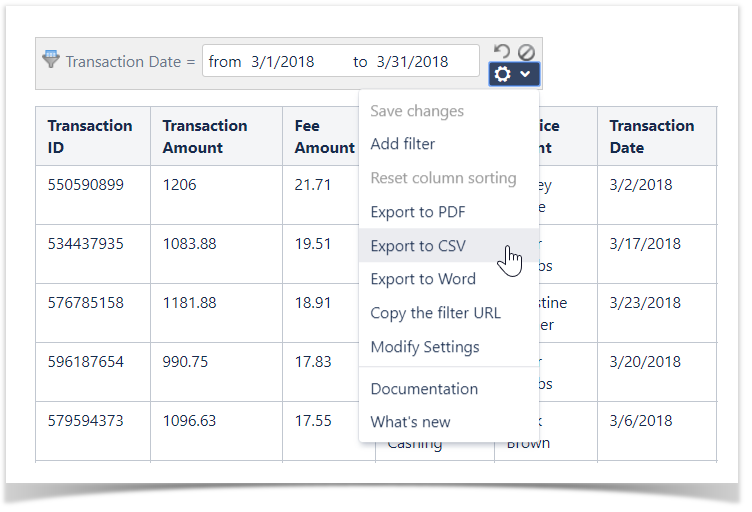
Export as image
Available in the folloving macros:
Chart from Table
Steps to export:
- On the control pane, locate the cogwheel icon and click it.
- Click Chart as image.
- Save the file to your local computer for opening.

Exporting the whole page, page tree or space
|
|
Sharing filter URL with colleagues
You can share the results achieved with the filtration pane of Table Filter with your colleagues. The sharing link contains all the necessary filtration parameters and the sorting order that can temporarily override the currently set filtration parameters and sorting. The saved filtration parameters are not affected anyhow by this method until you rewrite them by saving changes.
To share the filtration results:
- Open the page with the table.
- On the filtration pane, locate and click the cogwheel icon.
- Select Copy the filter URL.
- Share the link with colleagues.
See also a blog post: One-Click Table Filtration in Confluence |
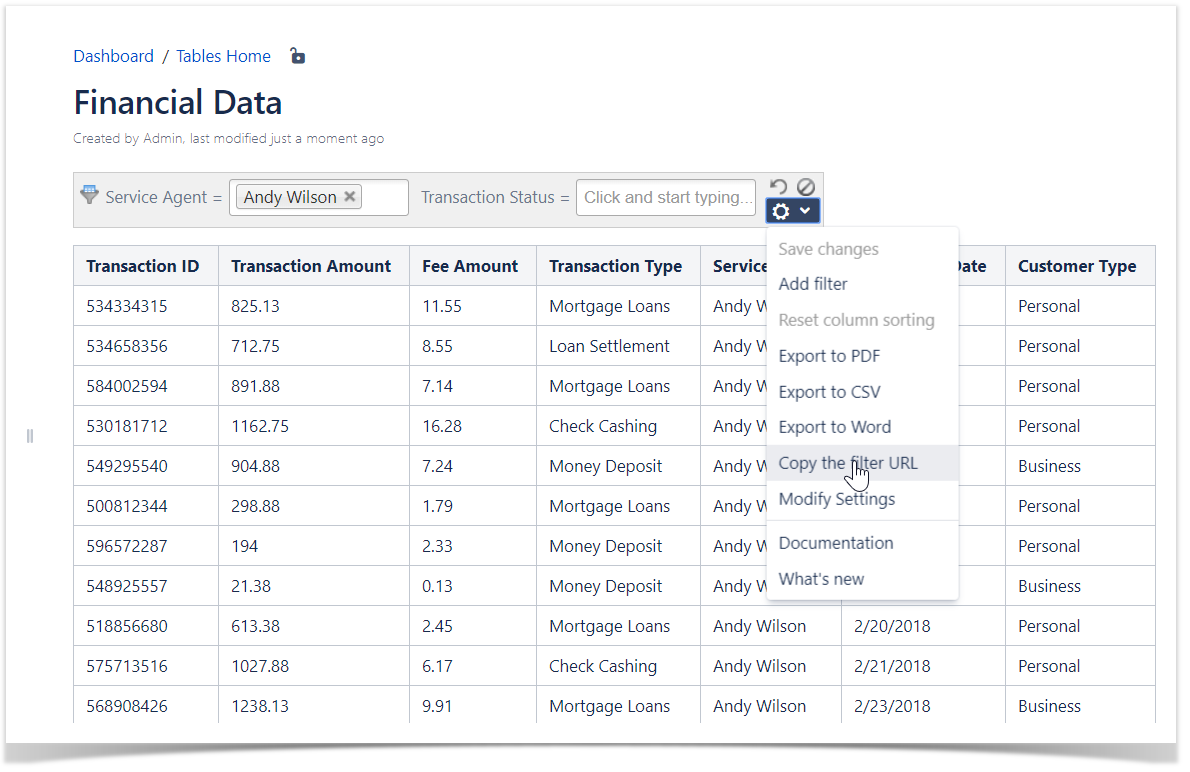
Creating a user macro to display export features as links
To display export features as links, you can create a user macro.
If you have only one Table Filter, Pivot Table or Chart from Table macro on the page, then create the following user macro and insert it on the page:
- For export to CSV:
## @noparams
<a href="#" onclick="$('.export-file-csv').eq(0).click();return false">Export to CSV</a> |
- For export to PDF:
## @noparams
<a href="#" onclick="$('.export-file-pdf').eq(0).click();return false">Export to PDF</a> |
- For export to Word:
## @noparams
<a href="#" onclick="$('.export-file-doc').eq(0).click();return false">Export to Word</a> |
If you have multiple macros on the page, then create the following user macro and insert it inside one or multiple macros:
- For export to CSV:
## @noparams
<a href="#" onclick="$(this).parents('.tablefilter-outer-wrapper, .pivot-content, .table-chart-contents').eq(0).find('.export-file-csv').eq(0).click();return false">Export to CSV</a> |
- For export to PDF:
## @noparams
<a href="#" onclick="$(this).parents('.tablefilter-outer-wrapper, .pivot-content, .table-chart-contents').eq(0).find('.export-file-pdf').eq(0).click();return false">Export to PDF</a> |
- For export to Word:
## @noparams
<a href="#" onclick="$(this).parents('.tablefilter-outer-wrapper, .pivot-content, .table-chart-contents').eq(0).find('.export-file-doc').eq(0).click();return false">Export to Word</a> |
|

